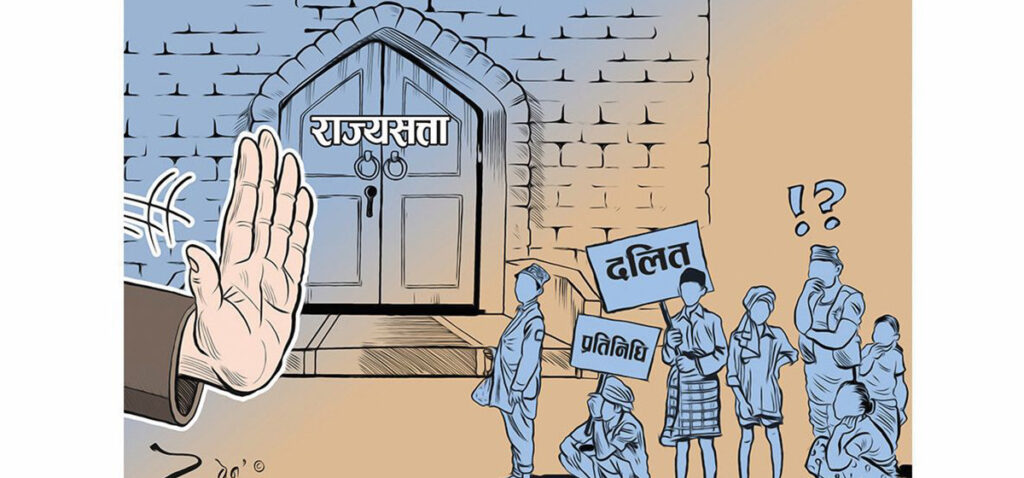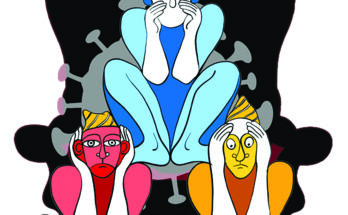
Dalits, who constitute 13.4 percent of Nepal’s total population, continue to face severe socioeconomic disparities compared to non-Dalit communities, a newly released government report has revealed.
The National Statistics Office on Sunday published a detailed report on Dalit-related statistics based on the 2021 national census. The data paints a stark picture of inequality, with a significant portion of Dalit families categorized as extremely poor.
According to the report, Nepal’s total population stands at 29,164,578, of which 3,898,990 (13.4 percent) are Dalits. Among them, 8.6 percent are hill Dalits and 4.8 percent are from the Terai region. Non-Dalit communities make up 86.2 percent of the population—56.2 percent are hill non-Dalits, and 25 percent are Tarai non-Dalits.
A staggering 36 percent of Dalits fall into the category of extreme poverty, compared to only 18 percent of non-Dalits. Among Dalits, Terai Dalits are the most economically disadvantaged, with 44 percent categorized as extremely poor, in contrast to 32 percent of hill Dalits.
Presenting the report, Sharad Kumar Sharma, Deputy Chief of the Statistics Office, noted that non-Dalits in both hill and Terai regions are economically far better off. In the highest wealth category, 22 percent of non-Dalits are represented, while only 6.2 percent of Dalits fall in that range. For Terai Dalits, the figure is a mere 1.9 percent. Among hill Dalits, 8.2 percent belong to the highest economic tier.
Sharma said Dalits remain underrepresented in education, healthcare, prosperity, and state mechanisms, which continues to pose challenges to national development.
Madhu Sudan Burlakoti, the chief statistician, added that the poor economic condition of Dalits stems from their limited access to basic services such as education, health, nutrition, and development.
“Historically, Dalits were subject to untouchability and social discrimination, which pushed them to the margins,” he said, “Though such practices are gradually decreasing due to rising awareness of equality and human dignity, the statistical reality calls for targeted policy reform.”
He emphasized that the data should now guide state policy and program planning for the upliftment of Dalit communities. “It is difficult to achieve the vision of a prosperous Nepal while leaving behind 13 percent of its people,” he said.
32 percent illiteracy rate
The national literacy rate for individuals aged five and above is 76.2 percent. Among non-Dalits, it stands at 77.6 percent, while the average literacy rate for Dalits is 67.4 percent—8.8 percentage points lower than the national average.
Further disparities emerge when broken down regionally. Literacy among Terai Dalits is only 51.9 percent, compared to 75.7 percent among hill Dalits, which closely aligns with the national average.
Sharma said these disparities call for educational policies tailored to Terai Dalits, backed by appropriate budget allocations.
13 percent never attended school
Among the population aged 5 to 25, 8.1 percent in Nepal have never attended school. However, the rate is 13.1 percent among Dalits, compared to 7.1 percent among non-Dalits. For Terai Dalits, the figure jumps to 27.5 percent. Among Terai Dalit women, a staggering 31.6 percent have never been to school.
Overall, 32.6 percent of Dalits remain illiterate.
Caste Categories: 5 hill and 17 Terai Dalit groups
Dhundi Raj Lamichhane, spokesperson for the Statistics Office, said affirmative action and inclusive quotas have encouraged Dalits to identify themselves more openly by caste.
Among hill Dalits, there are five main subgroups: Bishwakarma (Kami), Pariyar (Damai), Mijar (Sarki), Badi, and Gaine. Bishwakarma represents the largest share with 5 percent of the total population, followed by Pariyar (1.9 percent) and Mijar (1.6 percent). The Badi population is 11,470, and Gaine are 6,971 nationwide.
Tarai Dalits include 17 caste groups. Major ones include Chamar/Harijan/Ram (1.4 percent), Musahar (0.9 percent), Dusadh/Passwan/Pasi (0.9 percent), Tatma/Tatwa (0.4 percent), Khatwe (0.4 percent), Dhobi (0.4 percent), and Bantar/Sardar (0.2 percent). The Kalwar caste has the lowest Dalit population at just 931 individuals.
23 percent child marriage rate among Dalits
The child marriage rate among Dalits stands at 23 percent, significantly higher than the 13 percent rate among non-Dalits.
The report indicates that 8 percent of Dalit men and 34 percent of Dalit women were married as children. In contrast, 4.4 percent of non-Dalit men and 20 percent of non-Dalit women were married before the legal age.
Province-wise, Karnali Province records the highest child marriage rate at 20.1 percent, while Bagmati has the lowest at 8.4 percent.
Dalit population growing
The Dalit population has gradually increased over the past two decades. In 2001, Dalits made up 11 percent of the total population—7.1 percent hill Dalits and 3.9 percent Tarai Dalits. By 2011, the number had grown to 12.5 percent (8.1 percent hill Dalits and 4.4 percent Tarai Dalits). The 2021 census now records Dalits at 13.4 percent of the population, with 8.6 percent hill Dalits and 4.8 percent Tarai Dalits.
Among the Dalit population, 2.4 percent are living with disabilities, and 7.8 percent are single women.
Source: My Republic



